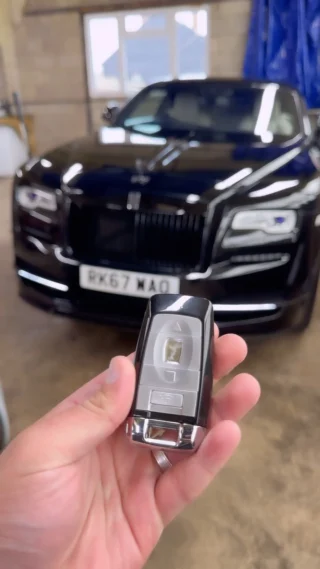7 Tips About Car Key Jammed That Nobody Can Tell You
Car Key Jammed: Causes, Solutions, and Preventive Measures
A car key jammed in the ignition is a common problem faced by vehicle owners. car key fob repair cost escalates when individuals are pressed for time or require instant access to their vehicle. This short article aims to supply extensive assistance on understanding the causes behind a jammed key, possible solutions to solve the concern, and preventive measures to prevent reoccurrence in the future.
Understanding the Causes of a Jammed Car Key
A car key might become jammed in the ignition for various reasons. Some of these causes include:
Cause
Description
Worn-out Key
A key that has ended up being worn might have a hard time to fit correctly within the ignition.
Ignition Cylinder Issues
Dirt, particles, or damage within the ignition cylinder can obstruct the key.
Steering Wheel Lock
If the steering wheel is locked, it can avoid the key from turning or being eliminated.
Electrical System Malfunction
Malfunctioning electrical connections or issues with the ignition switch can trigger issues.
Winter
Exceptionally low temperature levels can cause condensation to freeze within the ignition system.
Recognizing the Problem
Before using any solutions, it is important to identify the problem clearly. The following list can assist in recognizing the underlying problem:
- Check the Steering Wheel: If the guiding wheel is locked, carefully turn it while trying to eliminate the key.
- Examine the Key: Examine the key for signs of wear and tear, or flexing which might prevent correct performance.
- Examine the Ignition Cylinder: Look for noticeable debris or internal malfunctions that might be triggering the jam.
- Temperature level Check: Consider the climate conditions. Is it abnormally cold, which could affect ignition performance?
Solutions for a Jammed Car Key
As soon as the source has actually been established, several solutions can be used to deal with the jammed key concern.
Immediate Solutions
- Gentle Wiggling: Attempt to carefully wiggle the key while attempting to turn or pull it out. Avoid utilizing excessive force to prevent damage.
- Lubrication: Applying a percentage of graphite or silicone lube can help loosen a stuck key. Spray or insert it into the ignition cylinder thoroughly.
- Usage Pliers: If the key's head is accessible, using pliers may provide the essential grip to pull the key out without much force.
- Battery Disconnect: If the key is stubbornly stuck, detaching the vehicle battery for a few minutes may reset the electrical components.
Long-term Solutions
If the issue persists or repeats frequently, consider the following actions:
- Key Replacement: If the key is broken, it may be required to replace it. Check out a locksmith or your car dealership for a brand-new key.
- Ignition Cylinder Replacement: In cases of serious damage or regular jams, replacing the ignition cylinder itself may be needed.
- Professional Assessment: When DIY attempts stop working, looking for help from a professional mechanic is recommended. They can identify and repair deeper problems within the car's ignition or electrical system.
Option
When to Use
Gentle Wiggling
When the key is slightly stuck however appears functional.
Lubrication
If the ignition appears unclean or the key is hard to turn.
Usage Pliers
When the key head is accessible and there's a noticeable grip.
Professional Assessment
When all DIY suggests fail or when much deeper mechanical/electrical issues are suspected.
Preventive Measures
To avoid prospective problems in the future, vehicle owners can utilize several preventative techniques:
- Regular Maintenance: Schedule regular evaluations of your vehicle's ignition system to make sure everything is operating efficiently.
- Key Care: Handle car keys with care, avoiding dropping them or exposing them to moisture and harsh chemicals.
- Temperature Management: Protect the car from extreme weather condition conditions whenever possible. Consider utilizing a garage for parking during extreme cold or heat.
- Periodic Lubrication: Regularly apply lubricants to the ignition cylinder and key, helping avoid dust buildup and making sure smoother operation.
Regularly Asked Questions (FAQs)
Q1: Can I utilize oil to lubricate my car key or ignition?
A1: It is not suggested to utilize oil, as it can draw in dirt and debris. Rather, use dry silicone or graphite-based lubricants.
Q2: What should I do if my key breaks off in the ignition?
A2: If a key breaks off, do not try to eliminate the broken piece yourself. Look for assistance from an expert locksmith or mechanic.
Q3: Is it safe to utilize excessive force to attempt and get rid of a jammed key?
A3: No, utilizing excessive force can damage the ignition cylinder or the key, causing more substantial concerns and possibly costing more in repairs.
Q4: How can I inform if my ignition cylinder requires to be replaced?
A4: If you often experience key jamming, difficulty in turning the key, or persistent electrical problems in starting the vehicle, it might be time for a replacement.
A jammed car key can be an inconvenient and discouraging circumstance for any vehicle owner. By understanding the underlying causes, carrying out the best solutions, and adopting preventive measures, individuals can alleviate the likelihood of facing this issue in the future. When all else fails, looking for expert assistance ensures that the issue is successfully fixed, enabling you to go back to stress-free driving.
